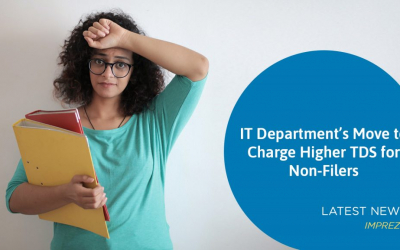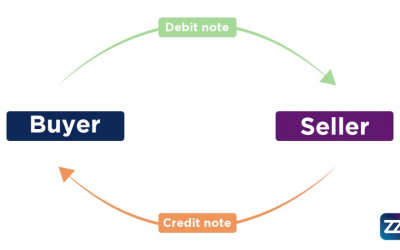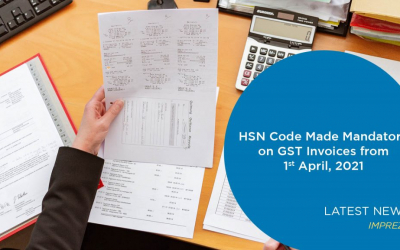 Goods and Services Tax (GST), so far, is one of the most nuanced tax reforms implemented by the Government of India (GOI). The primary agenda behind introducing GST was to eliminate the rippling effects of various taxes applicable under the Value Added Tax (VAT), Service Tax, and Excise Duty. Since its inception, GST has introduced different tax calculation methods, including facilitating (ITC) Input Tax Credit under GST.
Goods and Services Tax (GST), so far, is one of the most nuanced tax reforms implemented by the Government of India (GOI). The primary agenda behind introducing GST was to eliminate the rippling effects of various taxes applicable under the Value Added Tax (VAT), Service Tax, and Excise Duty. Since its inception, GST has introduced different tax calculation methods, including facilitating (ITC) Input Tax Credit under GST.
The constant flow of credits throughout the chain (from production to consumption) across the country is one of the prominent characteristics of GST. Under GST, ITC can be claimed regardless of the supplier’s location. This way, it is more convenient to access the purchase and sale of goods and services. Over the past few years, the GST regime has successfully built a unified tax system in India. Ever since understanding the concept of ITC has become crucial for taxpayers to stay GST compliant.
Previously, regular taxpayers were asked to follow “input credit rules”; wherein, businesses followed “VAT input credit rules”. However, this guide on Input Tax Credit will help you differentiate input credit and VAT input credit from GST ITC. This article is a part of our “Comprehensive GST Guide” – here’s everything you ought to know about Input Tax Credit Rules under GST.
Latest Updates on ITC as of 22nd December 2020
Changes Under GST ITC Rule 36 (4) That Were Made Effective Since 1st January 2021
- According to the latest amendment, suppliers can avail ITC as per the invoices uploaded either in their Form GSTR-1 or (IFF) Invoice Furnishing Facility.
- On the other hand, recipients of the invoices can claim provisional ITC on Form GSTR-3B to the limit of 5% instead of 10% total ITC available earlier on Form GSTR-2B for the month.
The New GST ITC Rule 86B
- Processing GST payment of tax under the electronic credit ledger over 99% of total tax liability for the current tax period is restricted.
Changes Under GST Registration Rule
- Taxpayers can cancel their online GST registration only if the condition laid out under Section 16 of CGST ACT doesn’t comply.
What is the Input Tax Credit (ITC)?
According to Section 2 (57) of Model GST Law (MGL) and Section 2 (1) (d) of IGST ACT, ITC is defined as the tax levied on the day-to-day supply of goods and services that is either used or intended to be consumed by the taxable entity concerning the CGST and SGST Laws. The taxpayer can further subsume the amount of tax payable under Sub-Section (3) of Section 7.
In simpler words, Input Tax Credit defines that, when paying taxes on outputs, an entity can reduce the taxes to be paid on the inputs. ITC is the amount of tax reduced from output tax payable on account of sales.
Basic Obligatory Requirements to Claim ITC
Under ITC rule, there are specific mandatory requisites that taxpayers must adhere to claim Input Tax Credit. Here’s a detailed list of requirements that every taxpayer registered must follow to avail ITC:
- The taxpayer must be registered under the (GST) Goods and Services Tax Act.
- The recipient must have received the goods or services before claiming for ITC.
- The taxpayer claiming for ITC must either have a tax invoice or discount note issued by the supplier that clearly states the taxable amount.
- The recipient cannot claim ITC unless supplier files his returns and pays the concerned tax to the government.
- When goods are received in parts or batches, ITC can be claimed upon receipt of the last payment or delivery.
- Claiming ITC is not permitted under circumstances where Input Tax Credit is included in the cost of capital goods on which depreciated tax is already claimed.
How to Claim & Reconcile 100% ITC?
Claiming input credit varies as per the types of taxes that are applicable under GST. Goods and Services Tax consists of 3 types of tax calculations; CGST, SGST and IGST. Here’s how you can claim and reconcile ITC completely under these three tax forms.
Central Goods and Services Tax (CGST)
The central government controls CGST on transactions that occur within one state. The credit can be used to offset CGST liability. In case the taxpayer has any credits remaining, it can be used to offset IGST liability.
State Goods and Services Tax (SGST)
The state government controls SGST on transactions that occur within one state. The credit can be used to offset SGST liability. The remaining tax credits can be used to offset IGST liability.
Integrated Goods and Services Tax (IGST)
IGST is a single levy tax controlled by the central government on transactions that occur between states. The credit can be used to offset IGST liability. If credit remains, it can be applied to CGST liability first, and then SGST liability.
Utilization of Input Tax Credit
According to the GST rule 88A, a notification issued by the (CBIC) Central Board of Indirect Taxes and Customs stated that firstly, taxpayers must utilize the ITC available on their integrated taxes to pay off other applicable integrated taxes. The credits remaining can be used to offset CGST, SGST and UGST liabilities later. This rule is applicable only when the beneficiary ITC on integrated tax has been completely used before availing the ITC on CGST, SGST and UGST.
Documents Required for Claiming ITC
Any registered taxpayer is eligible to avail input credit based on the following documents.
- GST e-invoice issued by a registered supplier.
- A debit note issued concerning the tax invoice previously issued by a registered supplier.
- Invoice issued by the recipient for tax paid on the goods and services, under the Reverse Charge Mechanism (RCM).
- Bill of Supply or a similar document on transactions concerning imports.
- Either an invoice or credit note issued by an Input Service Distributor.
Reversal of Input Credit (ITC)
There are certain circumstances under which taxpayers can reverse their claim for ITC. Here’s when taxpayers can do that:
- Under delayed payment or failure to pay the supplier within 180 days from the date of the invoice.
- Taxpayers can reverse ITC when goods or services, whether inputs or capital goods are used for personal use.
- It is also applicable when goods or services are used to produce or supply exempt goods or services.
- Under circumstances where ITC is already claimed on the sale of capital goods or plant and machinery.
- Input credit can be reversed through a credit note issued by an Input Service Distributor.
- Any supply ineligible under Section 17 (5) of the GST act can be used to reverse ITC.
- ITC is reversible on transactions that occur between a regularly registered taxpayer and a composite taxpayer.
What to Do When ITC is Reversed?
Here’s what taxpayers can do under circumstances where ITC is already reversed:
- Taxpayers can add the reversal amount to the month’s output tax liability in which ITC was reversed.
- Interest must be paid from the date of credit issue until the date when the amount is reversed and paid.
- No recovery time limit will be applied on reversed credit.
Ineligible Input Tax Credit – Blocked Credit Under GST
Taxpayers cannot avail the credit under the following cases:
- Motor Vehicle Purchase
- Exempt Supplies
- External Supplies
- Supply of Food & Beverages
- Health Services (cosmetic treatments and plastic surgeries)
- Health & Fitness Club Memberships
- Health & Life Insurances
- Travel Benefits Offered to the Employees
- Taxes Paid Under the Composition Scheme
- Stolen/Destroyed/Lost Goods
- Disposed of/Written Off gifts or Free Samples
- Goods/Services Used for Personal Consumption
- Goods/Services Received by a Non-Resident Taxable Person (except for the imports made by him)
- Contract Services on Immovable Property
How to Avail ITC Under Reverse Charge Mechanism (RCM)?
Taxpayers can benefit from the credit if the taxes are paid under the Reverse Charge Mechanism (RCM). When taxpayers pay on the reverse charge basis, ITC can be claimed in the same month in which the payment is processed. However, to avail ITC on reverse charge bases, it is necessary to meet the following criteria:
- Liability Discharged Through Cash
- Goods/Services Used for Business Purposes
- Self-Invoicing Done on Goods & Services Purchased from an Unregistered Supplier
Time Limit to Claim ITC
ITC can be claimed either against an invoice or debit/credit note before the following time frame, whichever occurs first:
- The due date for new GST returns filing for September of the following (FY) financial year.
- Date of annual return filing for the current fiscal year.
Conclusion
Filing tax returns has become one of the hassle-free accounting processes since the implementation of GST. Writing off taxes and availing credits is easier than ever. However, the mandatory laws and rules under GST have been pushing businesses and taxpayers to stay GST compliant. The number of registered taxpayers in India subsequently increased after the raise of the GST regime. The emergence of GST e-invoicing system and digital tax processes under GST has led to the evolution of accounting software in India.
Imprezz is the pioneer of small business accounting software that has helped various business sectors and taxpayers stay GST compliant. The cloud-based accounting system offers remarkable features for remote operations that enabled businesses to sustain during the tough times of COVID-19. The live version of Imprezz online accounting software allows business owners to control and share data access among ten different users. Imprezz GST billing software is just what your business is needs.
We offer a 14 days free trial software program for small businesses in India. Log in to stay GST compliant!


